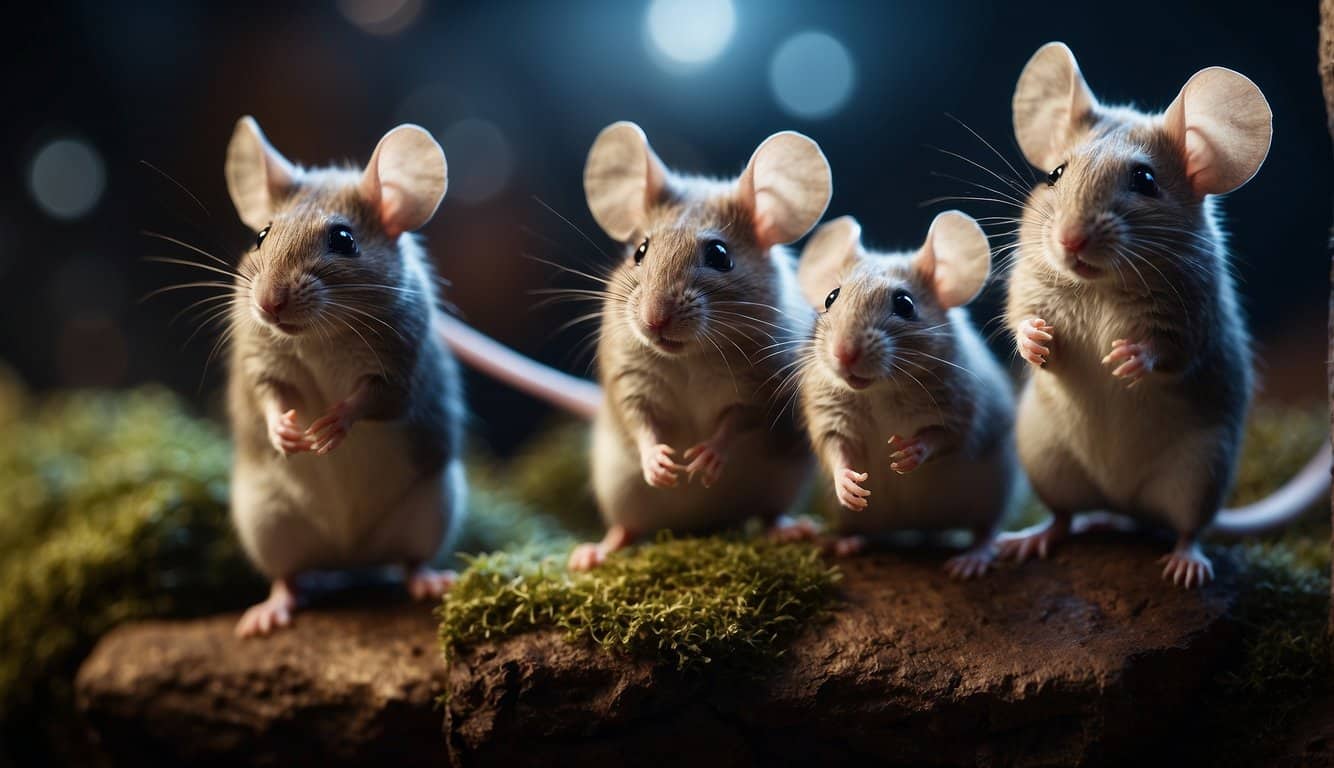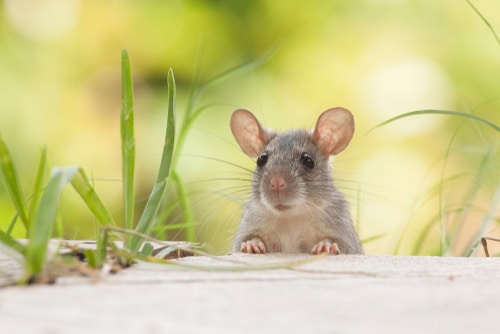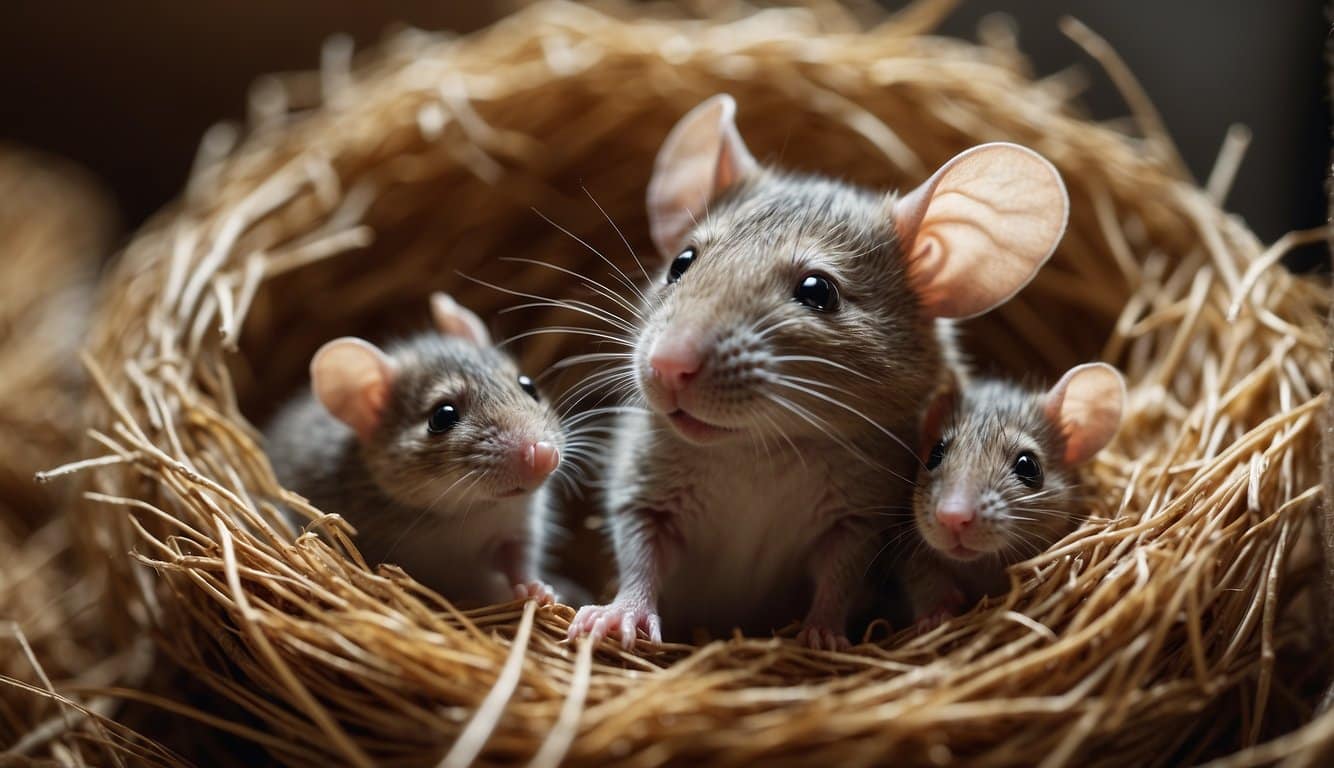Mice Mythbusters
In this section, you’ll find common misconceptions about mice and the surprising realities that replace fiction with facts.
Debunking Mouse Myths
- Myth: Mice love cheese and it’s the best bait for traps.
Fact: Mice actually prefer grains and fruits. They might nibble on cheese, but they are more likely to be tempted by peanut butter or chocolate. - Myth: Mice are dirty and carry diseases everywhere.
Fact: While mice can carry diseases, they are actually very clean animals and groom themselves regularly.
Surprising Facts Over Fiction
- Fascinating Trait: Despite their tiny size, mice are quite intelligent and can solve complex problems. This helps them evade predators and survive in various environments.
- Impressive Agility: Mice possess an incredible ability to squeeze through openings as small as ¼ inch in diameter, showcasing their adaptability and physical prowess.
Mice Super Skills
Your mousey companions are not just tiny fluff balls scurrying around; they’re equipped with some extraordinary skills that might astonish you.
Incredible Senses
- Hearing: Mice can detect ultrasound frequencies well beyond human capabilities. Their hearing spectrum extends up to 100 kHz, which is technology-grade listening!
- Smell: With a highly developed sense of smell, mice can sniff out food, detect predators, and even communicate through pheromones.
Physical Prowess
- Speed: Can outrun your attempt to catch it with speeds of up to 8 mph. That’s the equivalent of you sprinting to catch up with a car moving at a relaxed pace!
- Agility: They are tiny gymnasts, able to jump a foot into the air. This means a vertical leap to over 12 times their body height!
Escape Artists
- Squeezing Through Gaps: If you think a pencil-thin gap can stop a mouse, think again. They can compress their bodies to slip through spaces as small as a ¼ inch.
- Climbing: Watch them scale vertical surfaces with ease. Your walls are an adventure park to these whiskered acrobats.
Social Lives of Mice
Mice might be small, but their social lives are as complex and intricate as a bustling city. You’ll be surprised to learn just how they communicate and organize their communities.
Communication Methods
- Ultrasonic Sounds: Mice chat in frequencies that you can’t hear. These vocal communications often occur beyond our auditory range and are essential for social interactions.
- Scent Markings: They leave behind scent trails to communicate territory and social status, a kind of olfactory breadcrumb for others to follow.
Hierarchy and Social Structure
- Social Rankings: Within a mouse community, there’s a clear pecking order, with dominant mice and subordinates.
- Family Units: They form tight-knit family groups, with communal nesting and cooperative caregiving among relatives.
Lifespan and Reproduction
When you’re sizing up mice, you might not guess their potential for rapid reproduction or their relatively short lifespans; these factors have big ecological impacts.
The Circle of Life
Mice lead ephemeral lives, often completing their life cycle within a year, especially in the wild where dangers are rampant. Despite their brief time on this planet, mice can leave a substantial legacy through their offspring.
- Lifespan: On average, a wild mouse lives about 9 to 12 months, primarily due to natural predation and challenging living conditions.
- In controlled environments like your home or a lab, a mouse may celebrate a few more birthdays, typically 1 to 2 years.
Baby Boomers: Rapid Reproduction
Expect a mouse to turn into a parent fast. Mice are famed for their breeding proclivity, multiplying quicker than you might have thought possible.
- Maturity: Mice reach sexual maturity as early as 4 to 6 weeks old.
- Litters: A female mouse can deliver a litter of pups approximately every 20 to 30 days.
- Pup Count: Each litter keeps her busy with an average of 6 pups, though it can be up to 14.
Human and Mouse Interactions
Mice have a storied history with humans, featuring prominently in everything from groundbreaking scientific research to the status of beloved pets in our homes. Let’s dive into the specifics.
From Lab Research to Pet Love
- Lab Research: Mice have been crucial in the field of medical research. These small rodents share a significant amount of genetic similarity with you, making them excellent subjects for studying human diseases. Biomedical research has relied on mice for decades to develop treatments.
- Pet Love: If you ever thought of having a pocket pet, mice have been a popular choice. They’re not only smart and able to perform tricks, but also have complex communication skills that can capture your heart. Those soft squeaks and nimble movements make them entertaining companions.
Coexisting Challenges
- Home Invasion: Your home is a castle, but it might also be attractive to these furry little creatures. With their ability to squeeze through openings as small as ¼ inch, it’s no wonder mice find their way in seeking warmth and food.
- Disease Considerations: Keep in mind that living in close quarters with mice can pose health risks, as they are known carriers of diseases communicable to humans. Seal your perishables and be vigilant about cleanliness to coexist peacefully.
Frequently Asked Questions
Curiosity piqued about mice? Get ready to discover the lesser-known, fascinating facets of these tiny creatures that scurry beneath our feet and behind our walls.
What incredible abilities do mice have that most people are unaware of?
- Mice are talented acrobats, proficient in swimming and climbing, surprising many with their agility.
- They also possess a superb sense of smell, which aids them in communicating and locating food sources efficiently.
How do mice impact computer technology and what are their roles?
- You might find it fascinating that the term “computer mouse” was inspired by the rodent’s shape and size, pointing to a tool that revolutionized modern computing.
- In laboratory settings, mice are indispensable in biomedical research, contributing to advancements in disease treatment and technology.
What are some eerie behaviors or characteristics of mice?
- Ever noticed how silently a mouse can move? Their stealthy nature makes them excellent at avoiding predators.
- By emitting ultrasound frequencies, mice communicate on spectrums that are inaudible to human ears, a spooky fact when you consider the chatter that goes unheard.
Could you list some amusing tidbits about mice for young animal enthusiasts?
- Mice are not just cute, they’re clever too! They’ve been known to run mazes, perform tricks, and solve complex puzzles.
- Historically, several cultures including the Greeks and Japanese have harbored a fascination for these critters, even incorporating them into worship practices.
What should potential pet owners know about the entertaining aspects of mice care?
- As pets, mice are known for their playful antics and can be quite sociable with humans, creating a lively environment.
- From fashioning intricate tunnels to engaging with various toys, their zest for exploration keeps you entertained.
What is the amazing speed at which a mouse can scurry?
- A mouse might look small, but it can move quickly.
- It can reach speeds up to 8 kilometers per hour (5 mph) when escaping a threat or exploring new territory.


